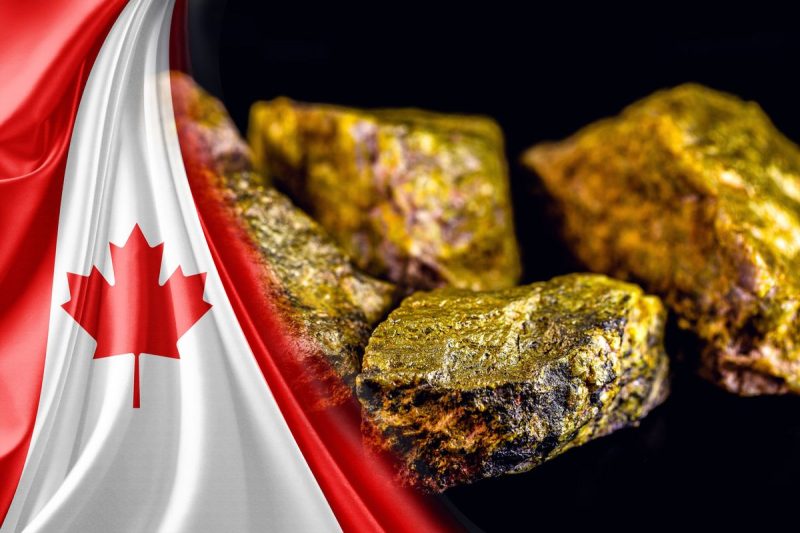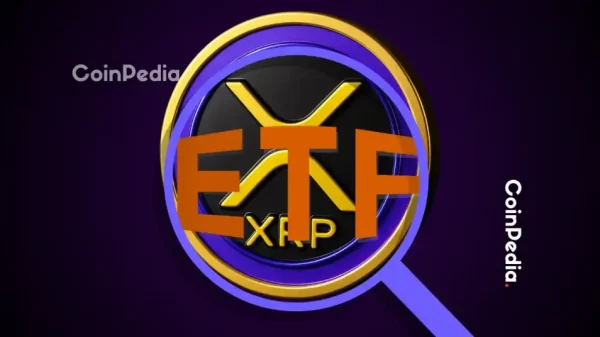
After reaching a 17 year high of US$106 in early January, the spot uranium price spent most of Q2 consolidating under US$90 per pound.
Uranium started the second quarter at US$88.05 per pound on April 1 prices shed 2.6 percent to end the quarter at US$85.70. While prices remained range bound for most of 2024’s second quarter, values have held above US$80 per pound since November 2023.
“Thus far in 2024, the uranium spot price has stabilized between US$85 to US$95 per pound after a significant 88.54 percent increase in 2023,� wrote Sprott’s Jacob White in a June market update. “This phase indicates a healthy correction within a bullish market cycle.�
White went on to note that the recent pause in uranium prices offers a promising entry point in the ongoing uranium bull market.
The ETF Product Manager at Sprott Asset Management sees market support coming from persistent supply uncertainties and renewed nuclear energy interest.
Below are the best-performing uranium stocks on the TSX, TSXV and CSE by share price performance so far this year. All data was obtained on July 8, 2024, using TradingView’s stock screener, and all companies had market caps above C$10 million at the time. Read on to learn what factors have been moving their share prices.
1. Greenridge Exploration (CSE:GXP)
Year-to-date gain: 163.83 percent; market cap: C$20.68 million; share price: C$1.24
Canada-focused Greenridge Exploration is currently engaged in the exploration of the Nut Lake uranium project in the Thelon Basin in Nunavut, Canada, and has acquired several uranium projects this year. The Nut Lake asset spans 4,036 hectares, and the company says it is strategically positioned near the Angilak uranium deposit, which was recently acquired by Atha Energy (TSXV:SASK,OTCQB:SASKF) as part of a three way merger with Latitude Uranium and 92 Energy.
Nut Lake is a new property for Greenridge. On January 18, the company entered into an option agreement with three parties to acquire a 100 percent stake in the asset. Historic drilling at the polymetallic deposit has identified “significant� uranium mineralization, with intersections of up to 9 feet containing 0.69 percent of U3O8.
Greenridge released a technical review of the property in April. In the release, Russell Starr, CEO of Greenridge, stated, ‘We continue to uncover promising geological data at the Nut Lake Uranium Project. The Thelon Basin and sub-basins are significantly underexplored compared to the well-known Athabasca Basin to the south.â€� In late May, the company increased its land position at Nut Lake by more than 40 percent to a total of 5,854 hectares.
Nut Lake wasn’t Greenridge’s only addition this year. The company also acquired the Carpenter Lake uranium project, which covers 13,387 hectares near the Athabasca Basin’s southern margin. Greenridge ended the quarter by acquiring 100 percent interest in the Snook Lake and Ranger Lake uranium projects in Ontario. The Ranger Lake project covers 20,782 hectares in the Elliot Lake region, while the Snook Lake project spans 4,899 hectares in Northwestern Ontario.
Greenridge’s share price has climbed throughout the year to reach a year-to-date high of C$1.25 on July 3.
2. District Metals (TSXV:DMX)
Year-to-date gain: 93.75 percent; market cap: C$40.15 million; share price: C$0.31
District Metals is an energy metals and polymetallic explorer and developer with a portfolio of nine assets, including five uranium projects in Sweden. It’s currently focused on its Viken property, which hosts a uranium-vanadium deposit.
Historic estimates conducted in 2010 and 2014 peg the indicated resource at 43 million metric tons with an average grade 0.019 percent U3O8, with another 3 billion metric tons with an average grade 0.017 percent U3O8 in the inferred category. According to the company, Viken is one of the “world’s largest in terms of uranium and vanadium mineral resources.’
Shares of District spiked to a year-to-date high of C$0.49 on May 21. The spike coincided with the company announcing its subsidiary, Bergslagen Metals, had received final approvals for its mineral license applications in Jämtlands and Västerbottens Counties in Sweden to explore for metals including vanadium, nickel, molybdenum and rare earth elements.
“We are very pleased with the timely approvals for our eight mineral license applications that cover a total of 91,470 hectares of ground that is highly prospective for Alum Shale deposit targets,� said Garrett Ainsworth, CEO of District. “Alum shales are the host rocks of our Viken Energy Metals Deposit, which represents a potentially significant source of critical and strategic metals and minerals for the green energy transition.�
3. CanAlaska Uranium (TSXV:CVV)
Year-to-date gain: 50.65 percent; market cap: C$90.03 million; share price: C$0.58
CanAlaska Uranium is a self-described project generator with a portfolio of assets in the Athabasca Basin. The region is well known in the sector for its high-grade deposits.
The company’s portfolio includes the West McArthur property, which is situated near sector major Cameco (TSX:CCO,NYSE:CCJ) and Orano Canada’s McArthur River/Key Lake mine joint venture. In 2018, Cameco signed on as a joint venture partner for CanAlaska’s West McArthur project, and it retains a 16.65 percent stake.
In mid-April, CanAlaska acquired the Intrepid East and Intrepid West projects in the Northeastern Athabasca Basin. The two Intrepid projects comprise a combined 58,747 hectares and are situated 20 kilometers north of the high-grade Hurricane uranium deposit.
During the second quarter of 2024, CanAlaksa also conducted airborne surveys at its projects near Cameco and Orano’s Key Lake mill — the Key Extension, Enterprise, Voyager and Nebula projects — as well as at its Frontier project.
In June, CanAlaska mobilized drill crews for the 2024 summer drill program at West McArthur. The C$7.5 million program focuses on expanding the high-grade Pike Zone uranium discovery. High grade results from the discovery drove CanAlaska’s share price to a year-to-date high of C$0.75 in early March.
4. Denison Mines (TSX:DML)
Year-to-date gain: 21.37 percent; market cap: C$2.53 billion; share price: C$2.84
Denison Mines is focused on uranium mining in Saskatchewan’s Athabasca Basin, holding a 95 percent interest in the Wheeler River uranium project.
In 2023, the company completed a feasibility study for Wheeler River’s Phoenix deposit, at which they plan to use in-situ recovery (ISR), and updated the 2018 prefeasibility study for the Gryphon deposit. According to the company, both deposits have low-cost production potential.
Denison also owns 22.3 percent of the McClean Lake joint venture with Orano Canada. The companies agreed in January to restart mining operations at the McClean North deposit, with a target of 2025. The two companies also share the nearby Midwest uranium project, with Denison holding a 25.17 percent interest.
On May 8, Denison released its Q1 2024 results in which it discussed its progress throughout the quarter, and noted that it is continuing to work towards a final investment decision for ISR mining at the Phoenix deposit.
In June, Denison announced that it completed an ISR field test program at the Midwest project’s Midwest Main deposit, which it said validated the use of the ISR method based on preliminary results. They plan to next develop a preliminary economic assessment for ISR mining at the deposit.
Denison shares rose to a year-to-date high on May 28 to trade for C$3.31.
5. Cameco (TSX:CCO)
Year-to-date gains: 18.5 percent; market cap: C$29.7 billion; share price: C$68.02
Uranium major Cameco operates across the entire nuclear fuel value change and holds significant stakes in key uranium operations within the Athabasca Basin of Saskatchewan, Canada. This includes a 54.55 percent interest in the Cigar Lake mine, the world’s most productive uranium mine.
The company also owns 70 percent of the McArthur River mine and 83 percent of the Key Lake mill. Orano Canada is Cameco’s primary joint venture partner across these operations.
On April 30, Cameco released its Q1 results. Cameco saw its share of uranium production increase to 5.8 million pounds in the quarter, up from 4.5 million pounds in Q1 2023, with a 16 percent reduction in unit cash production costs to $19.52 per pound.
Looking ahead, the company expects operations at McArthur River/Key Lake and Cigar Lake are expected to produce a total of 18 million pounds each in 2024.
In June, SaskPower, Westinghouse and Cameco penned a memorandum of understanding to evaluate Westinghouse’s nuclear reactor technology for potential deployment in Saskatchewan. The agreement focuses on assessing the AP1000 and AP300 small modular reactors reactors for long-term energy planning.
The trio will also explore ways to create a local nuclear supply chain, including fuel production, collaborating on research and workforce training with Saskatchewan’s institutions. SaskPower aims to make a final investment decision on constructing Saskatchewan’s first SMR facility by 2029, with plans to use the province’s uranium in the reactors.
FAQs for investing in uranium
What is uranium used for?
Uranium is primarily used for the production of nuclear energy, a form of clean energy created in nuclear power plants. In fact, 99 percent of uranium is used for this purpose. As of 2022, there were 439 active nuclear reactors, as per the International Atomic Energy Agency. Last year, 8 percent of US power came from nuclear energy.
The commodity is also used in the defense industry as a component of nuclear weaponry, among other uses. However, there are safeguards in effect to keep this to a minimum. To create weapons-grade uranium, the material has to be enriched significantly — above 90 percent — to the point that to achieve just 5.6 kilograms of weapons-grade uranium, it would require 1 metric ton of uranium pre-enrichment.
Because of this necessity, uranium enrichment facilities are closely monitored under international agreements. Uranium used for nuclear power production only needs to be enriched to 5 percent; nuclear enrichment facilities need special licenses to enrich above that point for uses such as research at 20 percent enrichment.
The metal is also used in the medical field for applications such as transmission electron microscopy. Before uranium was discovered to be radioactive, it was used to impart a yellow color to ceramic glazes and glass.
Where is uranium found?
The country with the greatest uranium reserves by far is Australia — the island nation holds 28 percent of the world’s uranium reserves. Rounding out the top three are Kazakhstan with 15 percent and Canada with 9 percent.
Although Australia has the highest reserves, it holds uranium as a low priority and is only fourth overall for production. All its uranium output is exported, with none used for domestic nuclear energy production.
Kazakhstan is the world’s largest producer of the metal, with production of 21,227 metric tons in 2022. The country’s national uranium company, Kazatomprom, is the world’s largest producer.
Canada’s uranium reserves are found primarily in its Athabasca Basin, and the region is a top producer of the metal as well.
Why should I buy uranium stocks?
Investors should always do their own due diligence when looking at any commodity so that they can decide whether it fits into their investment plans. With that being said, many experts are convinced that uranium has entered into a significant bull market, meaning that uranium stocks could be a good buy.
A slew of factors have led to this bull market. While the uranium industry spent the last decade or so in a downturn following the 2011 Fukushima nuclear disaster, discourse has been building around the metal’s use as a source of clean energy, which is important for countries looking to reach climate goals. Nations are now prioritizing a mix of clean energies such as solar and wind energy alongside nuclear. Significantly, in August 2022, Japan announced it is looking into restarting its idled nuclear power plants and commissioning new ones.
Uranium prices are very important to uranium miners, as in recent years levels have not been high enough for production to be economic. However, in 2024, prices spiked from the US$58 in August 2023 to a high of US$106 per pound U3O8 in February 2024. They have since consolidated at around US$85, meaning this could be a buying point for those looking to get into the sector.
Securities Disclosure: I, Georgia Williams, hold no direct investment interest in any company mentioned in this article.

































